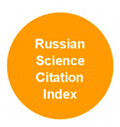Миграция и замещение поколений в Европе
Аннотация
Низкий уровень рождаемости в Европе уже на протяжении многих лет вызывает обеспокоенность и стимулирует важную дискуссию по вопросу, насколько миграция способна компенсировать рождаемость, находящуюся ниже уровня простого воспроизводства. Для оценки совместного влияния рождаемости, смертности и миграции на замещение рождений и поколений предложены разнообразные показатели. Эти индикаторы основаны на различных моделях и гипотезах, и для расчетов некоторых из них требуются детальные статистические данные. Мы предлагаем простой способ, позволяющий оценить вклад миграции в замещение рожденной когорты по мере ее взросления. Мы назвали эту меру итоговым индексом замещения (ИИЗ). Он рассчитывается как отношение численности рожденной когорты девочек в определенном возрасте к средней численности материнских когорт в год рождения девочек. Мы приводим оценки ИИЗ для ряда Европейских стран, имеющих различные режимы замещения поколений. Мы показываем, что за последние десятилетия во многих странах Европы миграция стала ключевым фактором, определяющим динамику населения.
Скачивания
Литература
Alho J. M. (2008). Migration, Fertility, and Aging in Stable Populations // Demography. 45(3): 641–650.
Avdeev A., T. Eremenko, P. Festy, J. Gaymu, N. L. Bouteillec, S. Springer (2011). Populations and Demographic Trends of European Countries, 1980-2010 // Population-E. 66(1): 9–130.
Beaujot R. (2003). Effect of Immigration on the Canadian Population: Replacement Migration? // Discussion Papers Series. 03-03. Population Studies Centre. University of Western Ontario. London. URL: http://www.ssc.uwo.ca/sociology/popstudies/dp/dp03-03.pdf.
Bijak J., D. Kupiszewska, M. Kupiszewski, K. Saczuk, A. Kicinger (2007). Population and labour force projections for 27 European countries, 2002-052: impact of international migration on population ageing // European Journal of Population. 23(1): 1–31.
Billari F.C., G. Dalla Zuanna (2011). Is replacement migration actually taking place in low fertility countries? // Genus. 67(3): 105-123.
Calot G., J.P. Sardon (2001). Fécondité, reproduction et remplacement // Population. 56(3): 371–396.
Castles S. (2004). Why migration policies fail // Ethnic and Racial Studies. 27(2): 205-227.
Coale A. J. (1986). Demographic Effects of Below-Replacement Fertility and Their Social Implications // Population and Development Review. 12: 203-216.
Coleman D. (2001). Replacement migration, or why everyone is going to have to live in Korea: A fable for our times from the United Nations // Philosophical Transactions of the Royal Society B. 357: 583–598.
Coleman D. (2006). Immigration and Ethnic Change in Low-Fertility Countries: A Third Demographic Transition // Population and Development Review. 32(3): 401–446.
Coleman D. (2009). Introduction: migration and its consequences in 21st century Europe // Vienna Yearbook of Population Research. 1–18.
Daguet F. (2002). Le remplacement des generations // Un Siècle de Fécondité Française: Caractéristiques et Evolution de la Fécondité de 1901 á 1999. Paris: INSEE: 235–252.
Dalla Zuanna G. (2006). Population replacement, social mobility and development in Italy in the twentieth century // Journal of Modern Italian Studies. 11(2): 188–208.
Dalla Zuanna G. (2008). La misura RM del rimpiazzo delle generazioni // Popolazione e Storia. 2: 61–72.
del Rey Poveda A., M. Cebrán-Villar (2010). Population replacement and migration in two Spanish regions during the Twentieth century // Population-E. 65(3): 481–497.
Demeny P. (2003). Population Policy Dilemmas in Europe at the Dawn of the Twenty-First Century // Population and Development Review. 29(1): 1–28.
De Santis G. (2011). Can immigration solve the aging problem in Italy? Not really…. // Genus. 57(3): 37–64.
Ediev D., D. Coleman, S. Scherbov (2007). Migration as a factor of population reproduction // European Demographic Research Papers. 1. Vienna Inst. of Demography. URL: http://www.oeaw.ac.at/vid/download/edrp_1_07.pdf.
Ediev D., S. Scherbov, D. Coleman (2012). New measures of population reproduction for an era of high migration. Unpublished manuscript under review.
Espenshade T.J., L.F. Bouvier, W.B. Arthur (1982). Immigration and the Stable Population Model // Demography. 19(1): 125-133.
Espenshade T.J. (1986). Population Dynamics with Immigration and Low Fertility // Population and Development Review. 12: 248-261.
Espenshade T.J. (2001). “Replacement Migration” from the Perspective of Equilibrium Stationary Populations // Population and Environment. 22(4): 383–389.
European Commission (2005). Confronting demographic change: a new solidarity between the generations. Green Paper. Brussels: Commission of the European Communities.
Eurostat (2005). EU25 population rises until 2025, then falls // Eurostat news release. 48.
Eurostat (2006). Long-term population projections at national level // Eurostat news release. 3. Luxembourg: European Communities.
Eurostat (2008). Ageing characterises the demographic perspectives of the European societies // Statistics in Focus, Population and Social Conditions. 72/ Luxembourg: European Communities.
Eurostat (2011a). EU 27 population is expected to peak by around 2040 // Eurostat news release. 80.
Eurostat (2011b). Migrants in Europe, 2011 edition. A Statistical Portrait of the First and Second Generation / Eurostat Statistical Books. Luxembourg: Publications Office of the European Union
Eurostat (2012). Population on 1 January by age and sex. URL: http://epp.euro-stat.ec.europa.eu/portal/page/portal/statistics/search_database (дата обращения: 03.05. 2012).
Festy P. (1979). La fécondité des pays occidentaux 1870-1970. Présentation d’un cahier de l’INED // Cahier de l'INED. 85. Paris: Presses Universitaires de France.
Gauthier A. (2007). The impact of family policies on fertility in industrialized countries: a review of the literature // Population Research and Policy Review. 26: 232–346.
Gesano G., S. Strozza (2011). Foreign migrations and population aging in Italy // Genus. 57(3): 83-104.
Human Fertility Database (2012). Data on fertility rates in Sweden. URL: http://www.humanfertility.org. (дата обращения: 03.05. 2012).
Human Mortality Database (2012a). Data on female population and mortality tables by age in Sweden. URL: http://www.mortality.org/. (дата обращения: 03.05. 2012).
Human Mortality Database (2012b). Data on female population in Ireland. URL: http://www.mortality.org. (дата обращения: 03.05. 2012).
Hyrenius H. (1951). Reproduction and Replacement: A methodological study of Swedish population changes during 200 years // Population Studies. 4(4): 421-431.
Keely C. (2001). Replacement Migration: the wave of the future? // International Migration. 39(6): 103–110.
Kuczynski R.R. (1928). The balance of births and deaths. Vol. 1. Western and Northern Europe. New York: The MacMillan Company. The Brookings Institution.
Lesthaeghe R. (2000). Europe’s demographic issues: Fertility, household formation and replacement migration // Population Studies in Britain and in the Netherlands, Utrecht.
Lutz W., S. Scherbov (2003). Future demographic change in Europe: the contribution of migration // Interim Report № IR-03-66. Laxenburg, Austria: International Institute for Applied Systems Analysis. URL: http://www.iiasa.ac.at/Admin/PUB/Documents/ IR-03-066.pdf.
Mcdonald P. (2002). Sustaining Fertility through Public Policy: The Range of Options // Population-E. 57(3): 417–446.
Office for National Statistics (2010). URL: http://www.statistics.gov.uk/statbase/Product. asp?vlnk=15106 (дата обращения: декабрь 2009 - август 2010).
Oláh L.S., E.M. Bernhardt (2008). Sweden: Combining childbearing and gender equality // Demographic Research. Vol.19. Article 28. URL: http://www.demographic-research.org/volumes/vol19/28/19-28.pdf.
Ortega J.A., L.A. del Rey Poveda (2007). Birth replacement ratios in Europe: A new look at period replacement / Annual Meeting of the Population Association of America, New York.
Preston S.H., H. Wang (2007). Intrinsic Growth Rates and Net Reproduction Rates in the Presence of Migration // Population and Development Review. 33(4): 657–666.
Ryder N.B. (1997). Migration and Population Replacement // Canadian Studies in Population. 24(1): 1 – 26.
Saczuk K. (2003). A Development and Critique of the Concept of Replacement Migration // CEFMR Working Paper. 4. Central European Forum for Migration Research. Warsaw. URL: http://www.cefmr.pan.pl/docs/cefmr_wp_2003_04.pdf.
Smallwood S., J. Chamberlain (2005). Replacement fertility, what has it been and what does it mean? // Population Trends. 119: 16–27.
Sobotka T. (2008a). Does persistent low fertility threaten the future of European populations? / P. Deboosere, J. Surkyn, J. van Bavel, eds. Demographic Challenges for the 21st Century: A State of the Art in Demography. Brussels: VUB Press: 27-89.
Sobotka T. (2008b). The rising importance of migrants for childbearing in Europe // Demographic Research. Special Collection 7. Vol. 19 (Article 9): 225–248.
Sobotka T. (2009). Migration continent Europe. Vienna Yearbook of Population Research, 2009: 217–233.
Tarmann A. (2000). The flap over replacement migration. URL: http://www.prb.org/Ar- ticles/2000/TheFlapOverReplacementMigration.aspx (дата обращения: 04. 2012).
Teitelbaum M.S., J.M. Winter (1985). The Fear of Population Decline. Orlando: Academic Press.
Tietelbaum M.S. (2004). Western experiences with international migration in the context of population decline // Japanese Journal of Population. 2(1): 29–40.
United Nations (2000). Replacement Migration: Is it a Solution to Declining and Ageing Populations? New York: Population Division.
Vatican (2006). Address of His Holiness Benedict XVI to the Roman Curia offering them his Christmas greetings. URL: http://www.vatican.va/holy_father/benedict_xvi/speeches/2006/december/documents/hf_ben_xvi_spe_20061222_curia-romana_en.html.
VID (2012). European Demographic Data Sheet 2012. Vienna Institute of Demography and IIASA / Wittgenstein Centre for Demography and Global Human Capital. URL: http://www.oeaw. ac.at/vid/datasheet/index.html.
Vos A.E. (2009). Falling fertility rates: new challenges to the European welfare state // Socio-Economic Review. 7(3): 485–503.
Wilson C., T. Sobotka, L. Williamson., P. Boyle (2010). A simple method for estimating inter-generational replacement based on fertility and migration - European examples // ESRC Centre for Population Change. Working Paper. 10. URL: http://www.cpc. ac.uk/publications/.
Wilson C., L. Williamson (2011). Intergenerational replacement and migration in the countries and regions of the United Kingdom, 1971–2009 // Population Trends. 145(Autumn): 1-16.
























